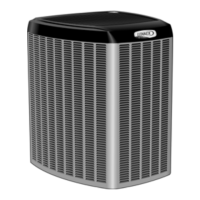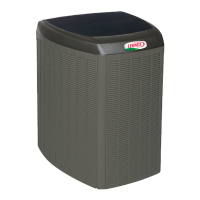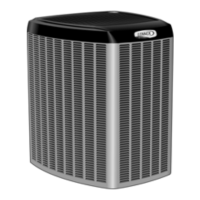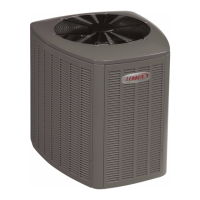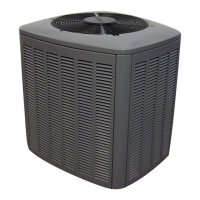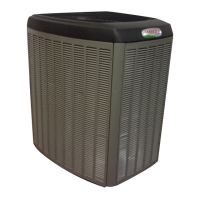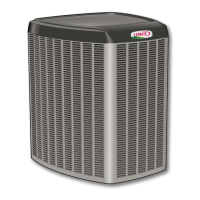
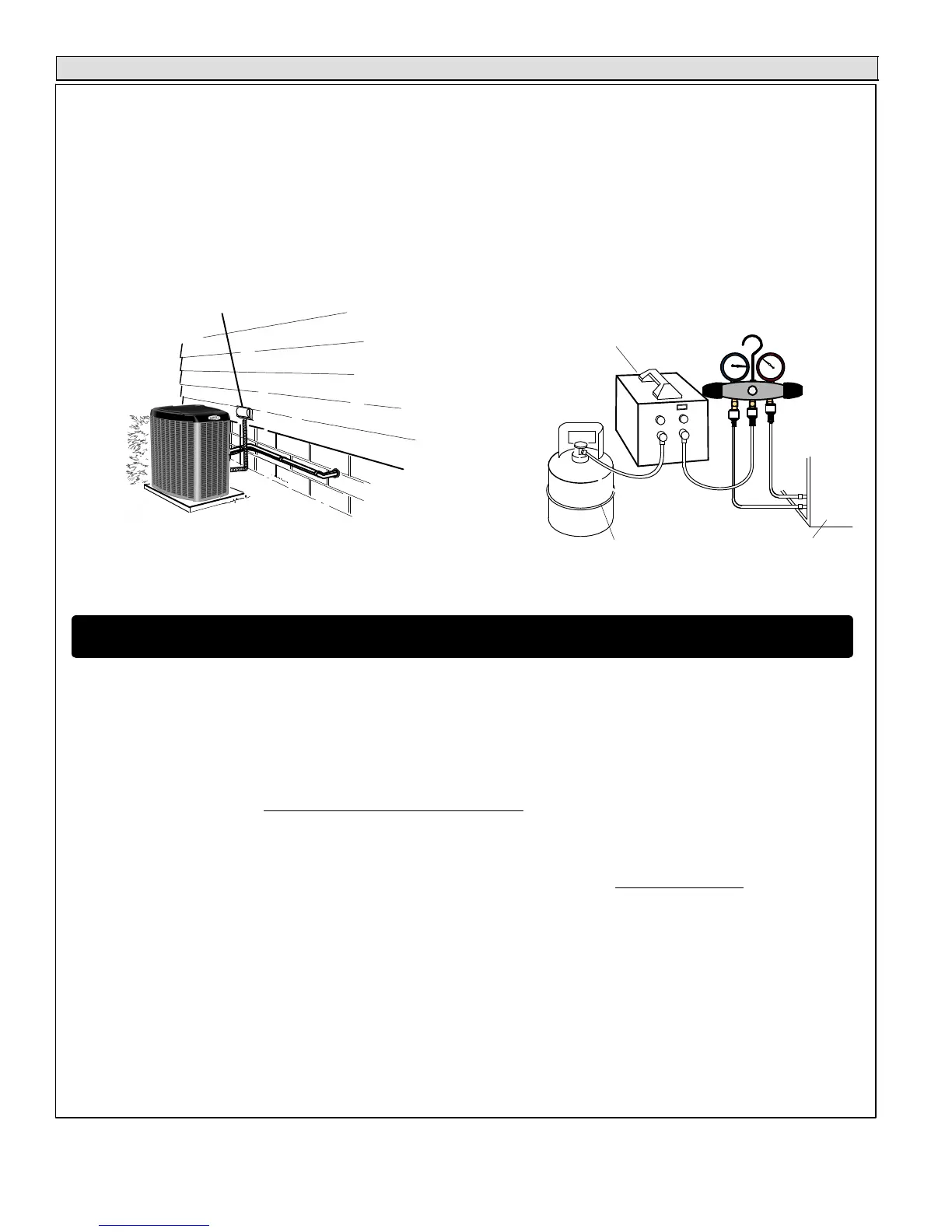
Do you have a question about the Lennox XC21 and is the answer not in the manual?
| SEER Rating | up to 21.00 |
|---|---|
| Sound Rating | as low as 69 dB |
| Refrigerant | R-410A |
| Energy Star Certified | Yes |
| Compressor Type | Two-Stage |
| Cooling Capacity (BTU/h) | 24000-54000 |
| Warranty | 10-Year Limited Warranty on compressor |
Important advisory about thermostat requirements and system setup.
Warning about improper installation causing injury, loss of life, or property damage.
Unit design for HFC-410A refrigerant and requirement for approved indoor air handler.
Information on proper tightening of fasteners and torque values for components.
Guidelines for using manifold gauge sets with HFC-410A refrigerant systems.
Describes the function of liquid and vapor line service valves for system operations.
Procedures for accessing and operating service valves.
Procedure for reinstalling stem caps on service valves.
Instructions for placing the unit on a slab, including slope tolerance.
Methods for elevating the unit using support feet and threaded adapters.
Guidelines for installing the unit on a roof, including minimum clearance.
Procedure for mounting the unit to a concrete or wood slab using stabilizing brackets.
Procedure for mounting the unit to a deck top using stabilizing brackets.
Procedures for removing fixed orifice and check expansion valve components.
Setup for flushing and the line set flushing procedure.
Instructions for installing the sensing bulb for temperature measurement.
Instructions for installing the equalizer line.
Steps for connecting the manifold gauge set for leak testing.
Procedure to test the system for leaks using refrigerant and nitrogen.
Connecting the gauge set and vacuum pump for evacuation.
Steps to evacuate the system to the required micron levels.
Instructions for sizing circuits and installing disconnect switches.
Information regarding the 24VAC transformer for control power.
Guidelines for installing the room thermostat at the correct location.
Specific instructions for routing control wires in non-communicating applications.
Specifications for routing control wires in communicating applications.
Instructions for routing high voltage and ground wires, and connecting conduit.
Description of Field Test Pins (E33) and their function.
Explains the LED alert codes for DS11 and DS14 on the A175 main control.
Explains the LED alert codes for DS15 and DS13 on the A175 main control.
Steps and checks required before starting up the unit.
Procedures for testing, charging, and verifying system refrigerant levels.
Instructions for connecting the gauge set for system testing and charging.
Checking indoor airflow using the Delta-T process and chart.
Method for charging the system using the weigh-in process.
Guidance on selecting the correct charge method (TXV, Approach, Weigh-in).
Calculating the total refrigerant charge for an empty system.
Information on the coil temperature sensor (or lack thereof) and its function.
Procedures for testing ambient and discharge line temperature sensors.
Methods for resetting LED alert codes manually or automatically.
Procedure for setting the unit size code on the A175 main control.
Explains LED codes, jumper settings, and operation sequences for the A177 fan motor control.
Procedure for testing the B4 fan motor operation using a 9V battery.
Explanation of the fan motor surge protector (MOV) and how to check it.
Maintenance procedures for the outdoor unit, including inspection and cleaning.
Procedures for maintaining indoor unit components like filters and condensate lines.
Homeowner guidance on outdoor coil maintenance and inspection.
General homeowner checks for system operation and maintenance.
Checklist for verifying compressor and fan motor performance during Y1 and Y2 demand.
Checks to perform before initiating system start-up.
Performance checks and measurements for the unit in cooling mode.
